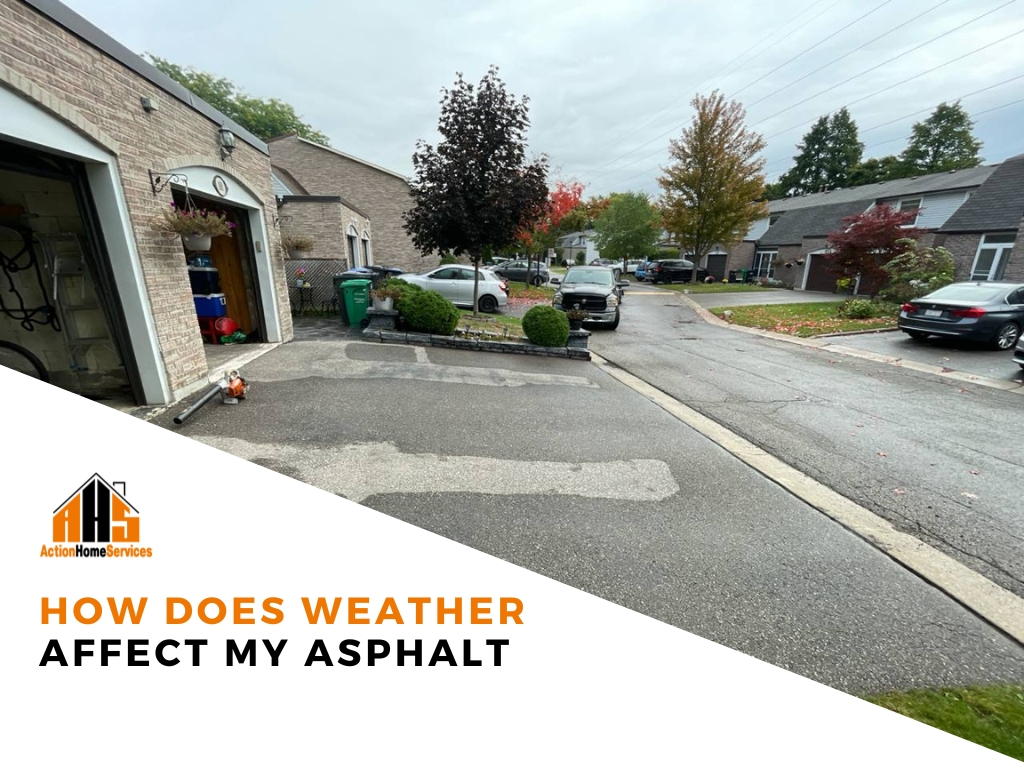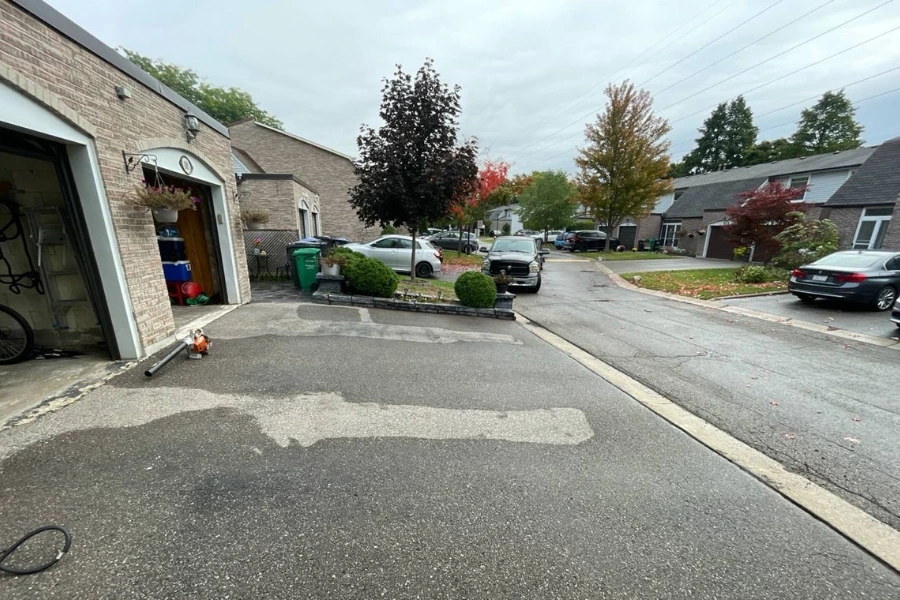
As the weather gets warmer, you might’ve noticed some cracks or uneven spots on your asphalt driveway. Don’t worry, it’s not you. A lot of that damage doesn’t come from how often you drive on it, it actually comes from the weather. The weather's effect on asphalt is something many homeowners don’t think about until damage shows up, but knowing how weather plays a role can help you better prepare your asphalt for harsher weather and avoid expensive fixes.
Here’s a breakdown of how asphalt reacts to different weather conditions.
How Does Heat and Sunlight Affect Asphalt?
In the summer, temperatures can climb fast and your driveway can definitely feel the heat. The surface can get so hot it starts to soften a bit. If you park your car in the same spot everyday, especially if it’s heavy, you might notice the tires leave slight indents over time.
The heat makes the asphalt material more flexible.
And the heat doesn’t just soften the asphalt, it also dries it out. Over time, UV rays can break down the materials that hold the surface together. You might notice the color fading or small cracks starting to appear. This is one of the signs of the weather effect on asphalt.
What You Can Do To Avoid It
Seal your driveway every couple of years. It can block out the sun by adding another layer of protection to your driveway. And if possible, avoid leaving heavy vehicles or trailers parked in one place for long periods during hot weather.
How Do Cold Temperatures Affect Asphalt?
Cold weather is rough on many surfaces. When temperatures drop, the surface gets smaller. But moisture can get into any tiny cracks. Once that moisture freezes, it expands. That expansion can push the cracks away from each other, making the cracks bigger than ever.
This cycle between cold nights and warmer days is tough on driveways. You might not notice damage right away, but it builds up over time. And when the freeze-thaw cycle repeats throughout the winter, the surface can start breaking apart.
What You Can Do To Avoid It
Fill cracks as soon as you see them, even the small ones. It’s a lot easier to deal with minor repairs early on. Clearing snow and ice quickly also helps. Less moisture means fewer chances for freezing damage.
How Does Rain Affect Asphalt?
Rain can actually do a lot of damage if your driveway isn’t protected. Water can seep into small openings and start breaking down the base layer. Once that happens, the surface loses support, which leads to potholes and bigger cracks.
If water doesn’t drain properly, it may sit on the surface after a storm. That sitting water slowly eats away at the top layer, especially if the surface is already a few years old or the protective seal is worn off.

What You Can Do To Avoid It
Make sure water can drain off your driveway instead of pooling. That might mean fixing the slope or clearing out nearby gutters. And again, sealing the surface every few years can help stop water from getting in.
How Do Freeze and Thaw Cycles Affect Asphalt?
One of the worst things for asphalt is when temperatures go up and down in a short time - which happens during winter, a lot. One day it’s just above freezing and raining, and the next it’s well below freezing. Water that gets into the surface freezes, expands, and causes cracks to grow. Then it melts, leaving a gap that lets in more water and the cycle starts again.
Even if you live in an area that doesn’t get tons of snow, just having temperatures bounce around a lot can be enough to do some damage.
What You Can Do To Avoid It
The best way to protect against this is by sealing and filling any gaps before winter starts. Just checking for cracks in the fall and patching them up can make a big difference.
Seasonal Changes
It’s not just extreme weather that matters. Even mild shifts from one season to the next can slowly wear things down. Spring brings rain, fall brings leaves and debris, and in between you get a mix of temperatures that can cause expansion and contraction.
Over time, these little changes can make big problems for your asphalt. That’s why regular upkeep is so important.
What You Can Do To Avoid It
Create a maintenance routine. AHS can help you schedule maintenance appointments to fill any cracks, clean off debris, and work on resealing if it’s been more than a couple of years.
Final Thoughts
Your driveway is always affected by the environment around it. In every season, there are different ways your asphalt is taking huge hits. A few small steps like sealing, crack filling, and improving drainage can go a long way in keeping your driveway in good shape year-round.


